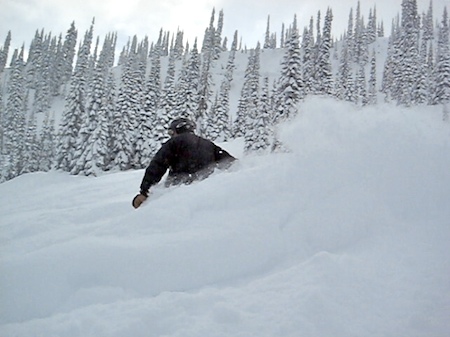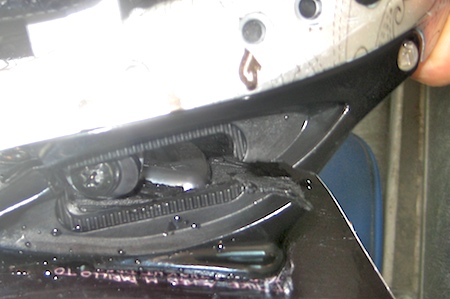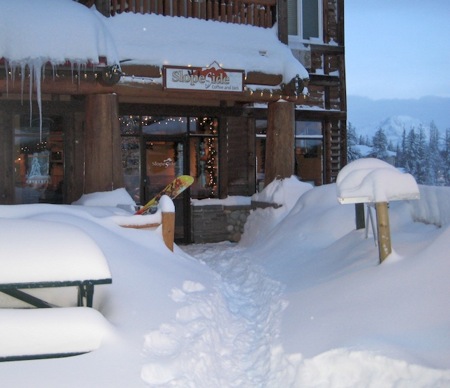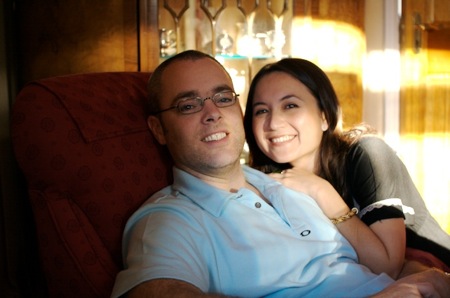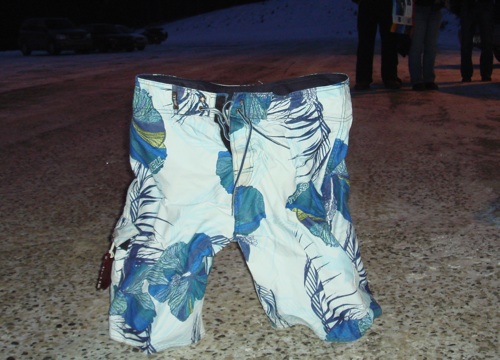That’s it, my season is over. I’m in Banff now with a couple of days to kill before flying out of Calgary, ending a 14-month sojourn in Canada. After leaving Fernie, I went up to “Kicking Horse”:http://kickinghorseresort.com/ to meet up with Tom, Dave, Rob and Paul for a few days riding there.
Unfortunately, the resort has gone down in my estimation since last year. It’s still got awesome terrain, and great steeps off the ridges, but their lift system is useless and they still can’t get a decent internet connection set up on the hill. For some unknown reason they don’t run the one chair which lets you access the good terrain on the front of the hill, forcing everyone to use the gondola, so on days when there’s a bit of new snow, you may have to queue for 45mins to get up the hill. They also like stopping the gondola during the day so that they can do avalanche control, stranding everyone down at the bottom of the hill. Why they can’t either do it in the morning before the resort opens, or just prevent access to the bowl which they’re currently bombing, leaving the others open, is beyond me.
Despite all that, we still got some good riding in over the four days, so it was a decent end to the season. Right now I’m sitting in Banff and it’s -34C outside incl. wind chill, so Canada seems determined to give me a proper winter send-off!
I’ve uploaded new photos as well: “Australia Day”:/albums/33 - “Fernie”:/albums/32 - “Kicking Horse”:/albums/34
